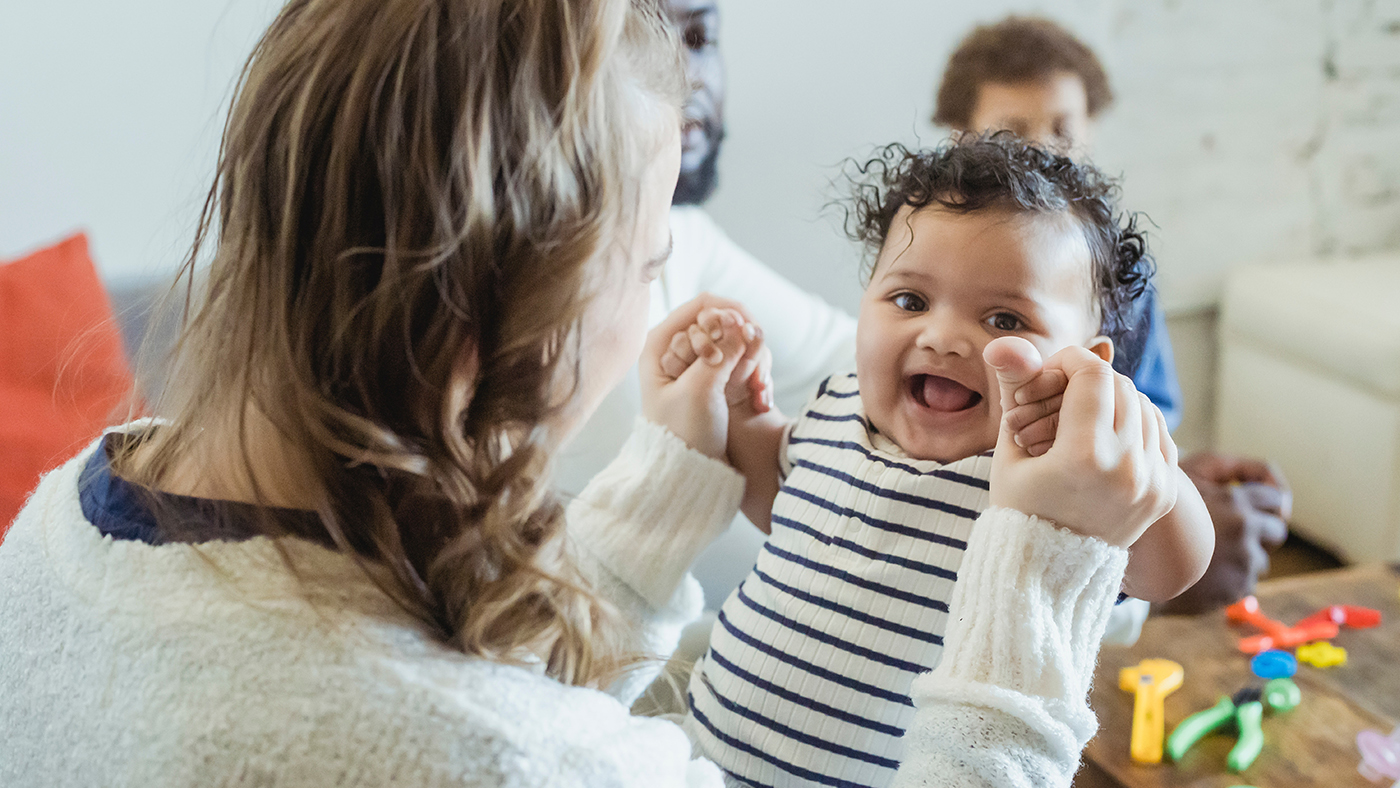How your baby 'reads' you and responds

Your baby is born into a complex social world and needs to learn quickly how to engage with it, how to respond to the actions of others, how to direct people towards fulfilling their needs, and how to build relationships.[1] That's a whole lot of learning! Thankfully, your inventive baby will find many ways to engage with you and other people around them.
Your baby has explored ways of using movement to attract your attention and has learnt that you will respond to them. Now, they are beginning to explore a wider range of ways to initiate interactions, testing your responses, and comparing these to the responses of others.
Your social smiler
The range of your baby’s expressions may still be difficult to interpret, but you might notice them becoming more alert as they progress to a ‘social smile’. A social smile is described as a smile made with purpose as a way to engage others.[2]
The statistics of love
We know that very young babies pay close attention to the relationship between their own actions and emotions and those of others – the statistics of love. Your baby notices that when they smile, you smile back, when they cry you comfort them. As they get older, they internalise the patterns of these interactions. They also learn that some people respond differently than others. Perhaps a parent responds quickly to their smile or sadness, while a stranger will not. Babies notice that some people are more responsive than others, so they come to rely more on those people.[3]
Reading people's faces helps your baby's brain to grow!
As the world comes more into focus, you'll see your baby’s vision playing an increasing part in relationships. Eye contact is the main source of information about other people's feelings and intentions, feelings are seen on the face, perhaps as a smile or a frown. Looking at faces has a powerful role to play in human life, especially in infancy these looks and smiles actually help your baby’s brain to grow as the baby’s nervous system becomes pleasurably aroused and their heart rate goes up. These processes are believed to trigger a biochemical response which helps your baby’s social brain to grow. Lots of positive experiences early on produce brains with more neural connections, so more richly networked brains.[3]
Getting vocal
Your baby will also now begin to vocalise with more intent, indicating pleasure when spoken to or pleased, and also in order to gain your attention and initiate further interaction. These vocalisations are integrated with smiles and movements and gestures during turn-taking exchanges or ‘proto-conversations’.
Repeated experiences form 'pathways' in their brain
As your baby grows, they will continue to build up these ‘mental muscles’. They will make neural connections or ‘pathways’ at a rapid rate, providing a dense network of possibilities. The most frequent and repetitive experiences will start to form well-trodden pathways, while connections left unused begin to be pruned away. As you provide consistent and loving responses, your baby will develop a pattern of ‘secure’ attachment, as they believe you are a reliable source of love. Later they will become unhappy when you leave them and comforted when you return, which is a lovely feeling for both of you.[4]
References:
[1] Moore, C. PHD, Corbit, J., PHD. (December 2019) Social Cognition in Infancy. Dalhousie University, Canada, Rev. ed.
[2] Sheridan, M., Sharma, A and Cockerill, H. (2014). Mary Sheridan’s from birth to five years. Children’s developmental progress. (4th edn.). Abingdon: Routledge.
[3] Gerhardt, S (2004) Why love matters; how affection shapes a baby’s brain. Routledge.
[4] Gopnik, A (2009) The Philosophical Baby: What children’s minds tell us about truth, love and the meaning of life. London: The Bodley Head.